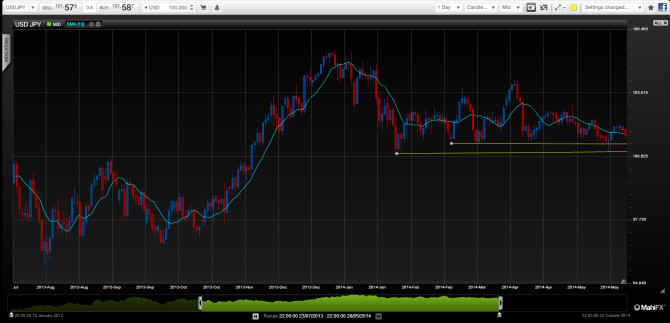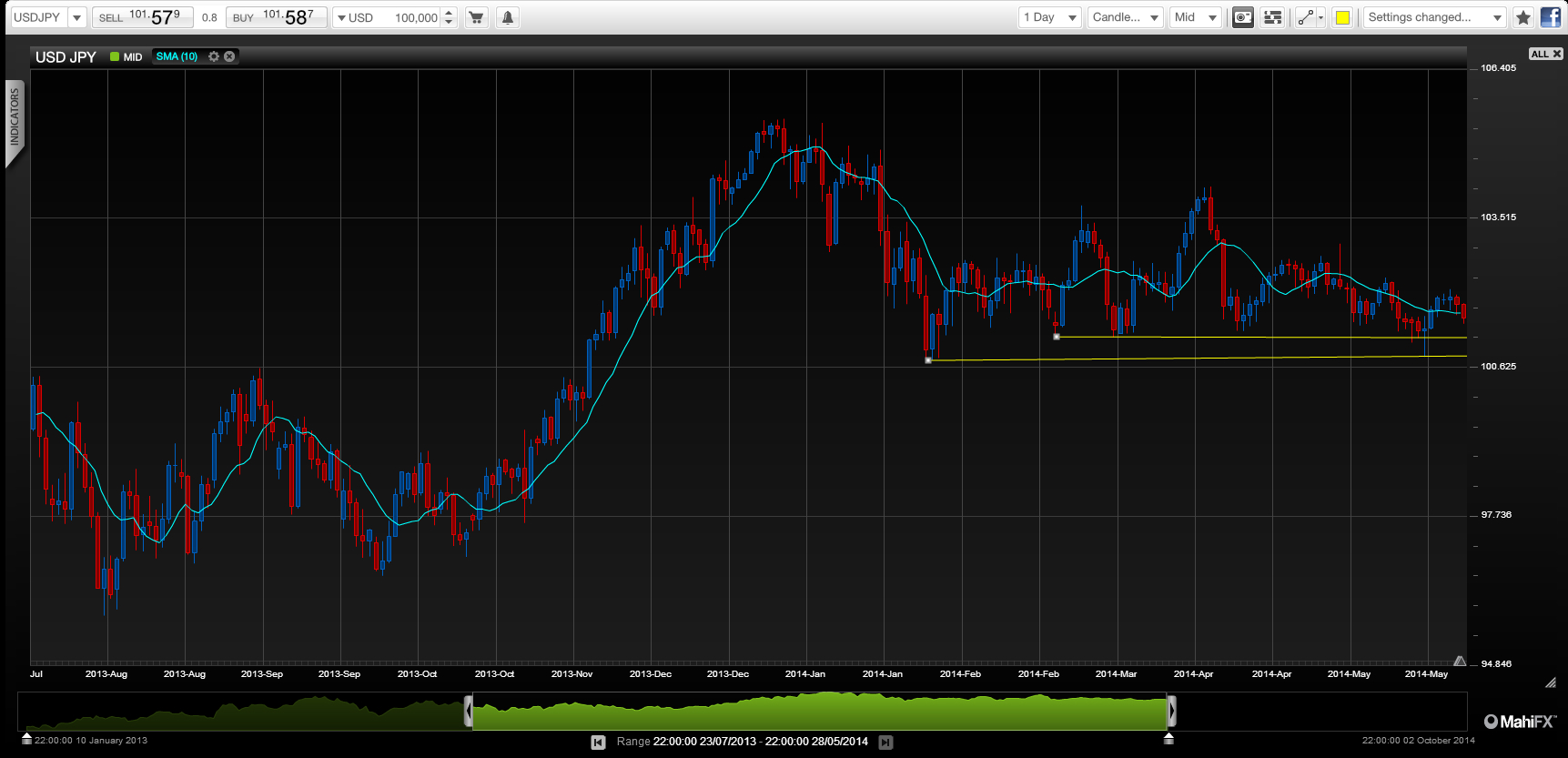The rhetoric coming out of Japan suggests there is a drift in emphasis away from monetary policy and towards reforms to make the economy more dynamic. On paper that should be bullish for JPY. However, currency weakness is likely to remain a key policy for Japan.
The Bank of Japan is starting to explore ways in which it might exit its huge quantitative easing programme with inflation around 1.3% (i.e. deflation gone) and improved economic performance. The emphasis is now being shifted to government reforms to take up the slack, such as cuts in corporate taxation where Japan has some of the highest rates in the developed world.
But the Bank of Japan is only in exploratory territory and is vowing to keep cheap money flowing for the time being. It will also act should signs of deflation reappear and given the country’s ageing and soon to be shrinking population a return to falling prices is quite possible.
By Justin Pugsley, Markets Analyst MahiFX. Follow @MahiFX on twitter
A fall below USD/JPY 100 would test BoJ tolerance of currency strength

Exports and efficiency likely to remain key policy targets
With potential limits on growing domestic consumption Japanese policy makers are likely to focus on investment to drive efficiency in the economy (services would be a good area as they lag manufacturing in terms of efficiency) and of course exports.
An emphasis on exports and improving corporate profitability (to drive investment levels and dividend pay-outs) would favour a weak JPY.
Also, there is talk that the recent rise in the sales tax to 8% from 5% is being weathered by the economy. Knowing that for sure will require a few more months of observation. Also, at some point the numbers will drop out of the inflation data as well.
Ideally, Japan is rediscovering its mojo. The higher sales tax and growing tax revenues from a more active economy would help the government get on top of the country’s massive debts.
However, there is a risk that a move away from a QE stimulus plus a strengthening currency could see the Japanese economy slip back into old ways of deflation and economic stagnation.
Given the recent talk from the BoJ that would suggest a ramp up in QE and other stimulus measures is never far off. Also, the unspoken fact is that QE does help governments fund themselves in the absence of real economic growth and rising taxes.
For the time being there are still more reasons to be pessimistic than optimistic about JPY over the long term and any move below USD/JPY 100 is likely to be met with intervention.
More: Australian Dollar Remains at Risk versus the Japanese Yen
